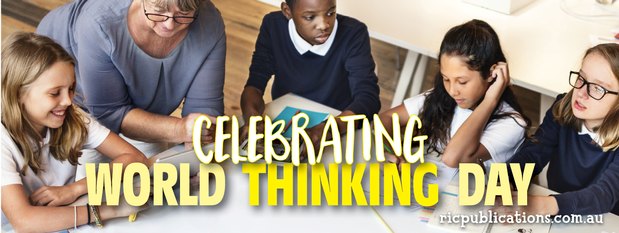- Tuesday 21 February 2017
- 0 Comments
Since its inception over 90 years ago, 22 February has evolved into a day when Girl Guides and Girl Scouts across the world think about their global sisters and take part in fundraising activities to support the international scouting movement. The theme for 2017 is 'Growth', inviting others to join and share the benefits of this global community.
The movement exists in 146 countries from the wealthiest to the most impoverished. It thrives on levelling society, taking no account of the material wealth of its members but helping them all to develop life skills, teamwork and support for and cooperation with others. Funds raised on World Thinking Day are used where they are needed most, ensuring groups in all countries have access to resources for all activities.
World Thinking Day can be integrated into the Civics and citizenship strand of the HASS curriculum. Students develop the skills of communication, collaboration, commitment, creativity, character and citizenship as they take part in activities to celebrate and promote the special day.
World Thinking Day in the classroom

• Ask any Girl Guides or Girl Scouts to talk about their experiences with the movement and to give reasons why others should join.
• One girl encourages two new girls to join the movement and each of those encourages two more. Challenge groups of students to demonstrate the power of communication, the ‘Growth from one seed’, by following this pattern to create a number tree. Which group can reach the greatest number in a set time?
• Use the skills of communication, collaboration, commitment, creativity, character and citizenship to democratically choose and hold a given number of fundraising activities on World Thinking Day.
• Where in the world? Display a large political world map. Choose how to highlight the various member countries.
• Download, print and use different materials to colour flags of each country to display around the room. Discover the evolution of some national flags. What does it tell of the country’s history?
• Divide students into groups and let them choose a country to research. Challenge students to share information in different ways; e.g. through food, music,dance, drama, stories.
• Students research one country to find responses to ‘This is my life. What’s yours like?’
• Develop a series of simple quiz questions to help students learn more about the movement’s member countries. Divide students into teams to compete in the quiz.
• Select an appropriate problem-solving initiative challenge from the internet for groups of students to complete. The team with the greatest cooperation and communication skills usually wins!
These are just a few ideas to start students thinking about children in other countries and how their lives compare to their own.
Please comment below if you have more thoughts on World Thinking Day and how it can be celebrated in the classroom.

